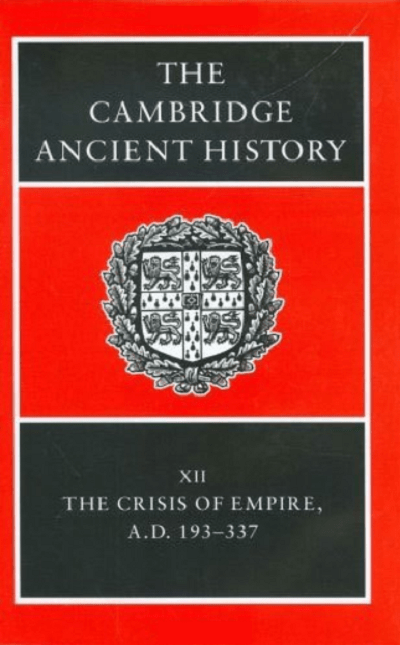

983 s, s/b resimler, sert kapak ciltli, şömizli, İngilizce.
This volume covers the history of the Roman Empire from the accession of Septimius Severus in AD 193 to the death of Constantine in AD 337. This period was one of the most critical in the history of the Mediterranean world. It begins with the establishment of the Severan dynasty as a result of civil war. From AD 235 this period of relative stability was followed by half a century of short reigns of short-lived emperors and a number of military attacks on the eastern and northern frontiers of the empire. This was followed by the First Tetrarchy (AD 284-305), a period of collegial rule in which Diocletian, with his colleague Maximian and two junior Caesars (Constantius and Galerius), restabilised the empire. The period ends with the reign of the first Christian emperor, Constantine, who defeated Licinius and established a dynasty which lasted for thirty-five years.
Review: "This series is a basic 'must' for all public and private libraries, in the community or in universities. It will be the standard general work for serious academic students and scholars for the next generation." --Religious Studies Review
"This volume, as with the rest of the set, will provide a historiographical reference for the next half century thereby justifying the cost. Both the volume and the larger set are recommended for academic, college and research libraies." --American Reference Books Annual
"This work is an excellent reference work for professional scholars, graduate students, and advanced undergraduates." - Michael DiMaio, Jr. Salve Regina University
Preface; Part I. Narrative: 1. The Severan dynasty Brian Campbell; 2. Maximinus to Diocletian and the 'crisis' John Drinkwater; 3. Diocletian and the first tetrarchy, 284-305 Alan K. Bowman; 4. The reign of Constantine, 306-337 Averil Cameron; Part II. Government and Administration: 5. The army Brian Campbell; 6. The emperor and his adminstration; 6a. General developments Elio Lo Cascio; 6b. The age of the Severans Elio Lo Cascio; 6c. The government and administration of the empire in the central decades of the third century Elio Lo Cascio; 6d. The new state of Diocletian and Constantine: from the tetrarchy to the reunification of the empire Elio Lo Cascio; 7a. High classical law David Ibbetson; 7b. Epiclassical law David Johnston; Part III. The Provinces: 8. Provinces and frontiers John Wilkes; 9. Developments in provincial and local administrations Jean-Michel Carrie; 10. Egypt from Septimius Severus to the death of Constantine Alan K. Bowman; Part IV. The Economy of the Empire: 11. Coinage and taxation: the state's point of view, 193-337 Mireille Corbier; 12. Coinage, society and economy Mireille Corbier; Part V. The Non-Roman World: 13. The Germanic peoples and Germanic society Malcolm Todd; 14. The Sassanians Richard N. Frye; 15. Armenia and the Eastern Marches Christopher S. Lightfoot; 16. The Arabs and the desert peoples Maurice Sartre; Part VI. Religion, Culture and Society: 17. Late polytheism; 17a. The world-view Garth Fowden; 17b. The individual and the gods Garth Fowden; 17c. Public religion Garth Fowden; 18a. Christianity, AD 70-192 Mark Edwards; 18B. Third-century Christianity Graeme Clarke; 23. Art and architecture, 193-337 Janet Huskinson; Appendices to chapter 8; Stemmata; Chronology.
